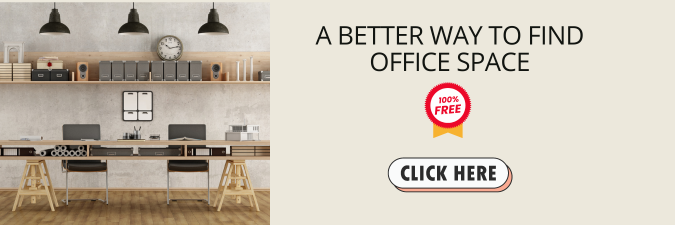Choosing the right type of office flooring is a crucial decision when it comes to creating an attractive and productive workspace. After all, your flooring will be a major part of your office decor and functionality for years. With so many types of flooring materials to choose from – hardwood, laminate, carpet, vinyl, tile – deciding which material best suits you can seem daunting. However, with the right guidance and knowledge about each option, selecting the perfect surface for your workplace can be surprisingly painless. Read on to learn more about the different types of office flooring materials and how to make the best choice for your space.
1. Consider the Type of Traffic Your Office Will Have
The amount of foot traffic your office experiences daily should be one of the key factors influencing your flooring decision. High-traffic areas such as entryways, hallways, and common areas may require terrazzo and polished concrete as they are extremely durable and easy to maintain. These areas should also withstand spills or dirt that may track in from the outside.
On the other hand, if your office accommodates fewer employees or clients or specific areas are less frequently utilized, you might opt for more luxurious and comfortable materials like hardwood or carpet. These types of flooring can add a sense of warmth and elegance to your office space, enhancing its aesthetic appeal. However, they may require more upkeep and might not withstand heavy traffic as effectively as their tougher counterparts.
2. Choose a Flooring Material That is Durable and Easy to Maintain
When choosing the perfect flooring material for your home, durability, and ease of maintenance are two essential factors. Luckily, there are several options available in the market that can offer both. One such option is porcelain tiles which are incredibly durable, resistant to scratches, spills, and stains, and easy to clean. Another great choice is vinyl plank flooring, which is easy to maintain, affordable, and waterproof.
If you’re looking for something more natural, hardwood is a timeless option that can give your home a warm and inviting feel while lasting for years with proper care. Laminate floors are also becoming increasingly popular due to their affordability and easy installation process. Whichever type of flooring you choose, ensure it is suitable for the foot traffic in your office and can be easily maintained regularly.
3. Opt For Sustainable Materials and Go Green,
Sustainable flooring materials such as bamboo, cork, and linoleum are all excellent options for the green-conscious business owner. Bamboo and cork are rapidly renewable resources, taking just three to five years to reach maturity, compared to hardwood trees which can take 20 years or more. On the other hand, linoleum is made from natural materials, including linseed oil, cork dust, and wood flour, making it biodegradable and recyclable.
Opting for green flooring means something other than compromising on style or durability. Many eco-friendly materials are available in various colors and finishes and can be as durable as traditional flooring options. Plus, they come with the added benefits of being hypoallergenic and, often, more comfortable underfoot. Incorporating sustainable practices into your office design demonstrates your commitment to environmental responsibility and can boost employee morale and productivity, as a healthier, greener workspace contributes to overall well-being.
4. Analyze the Noise Level in Your Office
Noise levels in the office can greatly affect productivity and overall well-being. Creating a comfortable work environment that limits disturbances and distractions is crucial. Hard surfaces such as hardwood or tile can create an echo effect which can be distracting and uncomfortable for employees. On the other hand, carpeted floors can reduce echoing and provide more sound absorption for a quieter atmosphere.
Opt for a combination of carpet and area rugs that can absorb sound and reduce echoes for maximum soundproofing. If you’re looking for an even more cost-effective solution, acoustic underlayment or foam padding are great options when installed underneath carpets or hardwood floors. These materials help reduce noise transmission from one room to another, making your workspace quieter and more conducive to productivity.
5. Weigh the Cost of Each Flooring Material
Choosing the right flooring material for your home or office is essential. While aesthetics are undoubtedly important, so too is durability. It’s essential to weigh the cost of each flooring material against its durability and aesthetic appeal before making a final decision. For instance, hardwood may be long-lasting and aesthetically pleasing, but it will cost you more than laminate flooring, which is also durable but much cheaper.
Investing in quality materials can save money in the long run as they require less frequent replacement or repair. So take your time to compare all available options before making a final decision. Remember to factor the cost of installation and maintenance into your overall budget so that you can choose a material that meets both your needs and your financial constraints.
6. Determine the Right Subfloor Type for Your Office
Before you decide on a flooring material, it’s essential to consider the type of subfloor that is suitable for your office. Depending on what kind of foundation your space has, different flooring materials may require different levels of support. Concrete floors are one example where most types of flooring can be easily installed with minimal preparation. Wooden subfloors, however, require special attention to ensure the flooring material is appropriately supported and secure. Plus, considering the benefits of concrete floor resurfacing, it’s an excellent option for both new and existing office spaces.
If you opt for a soft flooring material such as carpet, ensure your subfloor is level and smooth so that the carpet installation can be done appropriately. If you’re choosing wood or tile, ensure enough support under the subfloor to accommodate the weight of the material. Considering all these factors will ensure that you make the right decision when choosing the ideal flooring material for your office.
Choosing the right flooring material for your office space is an important decision that requires careful consideration. Factors such as aesthetics, durability, cost, maintenance, soundproofing, and subfloor type should all be part of your decision-making process. With careful planning and research, you can find a flooring material that suits your needs and budget while providing a pleasant environment for your employees. By investing in the right flooring, you can create an inviting space that will be comfortable to work in for years.


